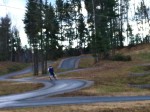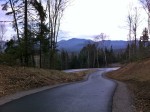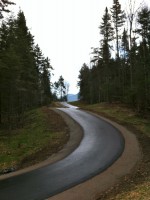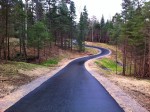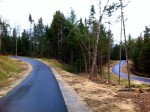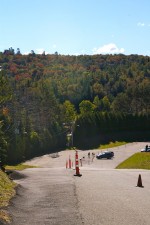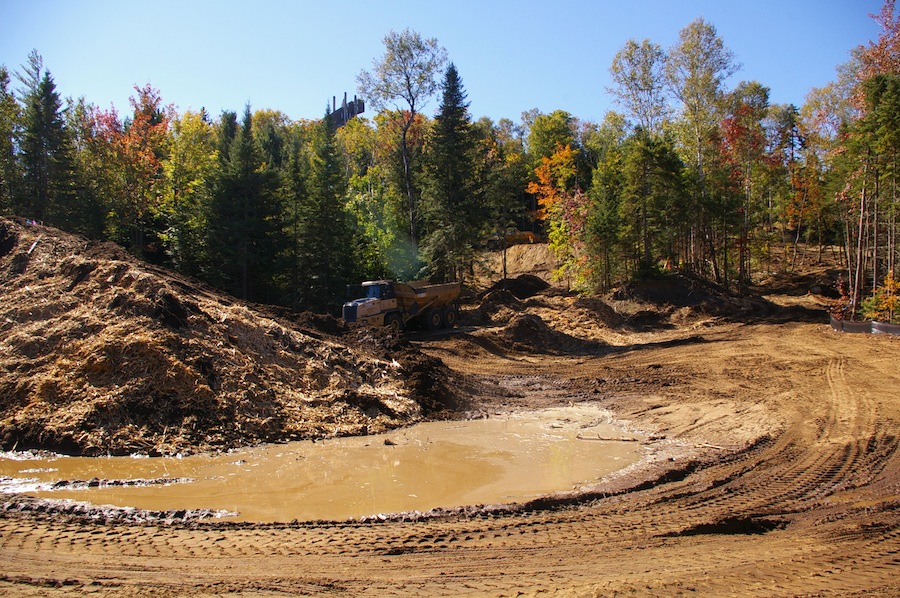
LAKE PLACID, N.Y. – Anyone on the upper part of the rollerski loop at the Olympic Jumping Complex after mid-August likely caught a glimpse of its under-construction backdrop. Mounds of dirt and heavy machinery littered the landscape spanning farther up the hill. Something was going on, and it looked like a big deal.

Training on the range below almost daily throughout the offseason, US Biathletes Tim Burke and Lowell Bailey knew exactly what the plan was. They helped design it.
The nearly 14-week project, headed by the Olympic Regional Development Authority (ORDA) with the financial backing of the United States Olympic Committee (USOC) and its sponsor, 24 Hour Fitness, wrapped up in mid-October and added another kilometer and a half of paved rollerski trails to make for a nearly 3 ½ k loop.
By the time Lake Placid-based biathletes like Burke and Bailey returned from a national-team camp in Park City, the bulldozers had dispersed and pavement solidified to reveal an impressive series of switchbacks. Suddenly, no snow in late October and early November wasn’t the worst thing in the world. The biathletes had a brand new rollerski loop to train on.
“It’s absolutely huge for us,” Burke said Nov. 11 during one of his last days on the Lake Placid range before leaving for Sweden. “We’ve been skiing through the parking lot for the last five years, really, so to have this means so much to us and our program.”
US Biathlon Executive Director Max Cobb said the rollerski loop has been a goal of the association’s for nearly 25 years. Back when he started with USBA in 1989, it had plans to construct a paved loop at Mount Van Hoevenberg, which hosted cross-country skiing, biathlon, bobsled, luge and skeleton at the 1980 Olympics. The Adirondack Park Agency upheld wildlife conservation laws and shot that down, so USBA sought alternatives, which took another two decades to materialize.
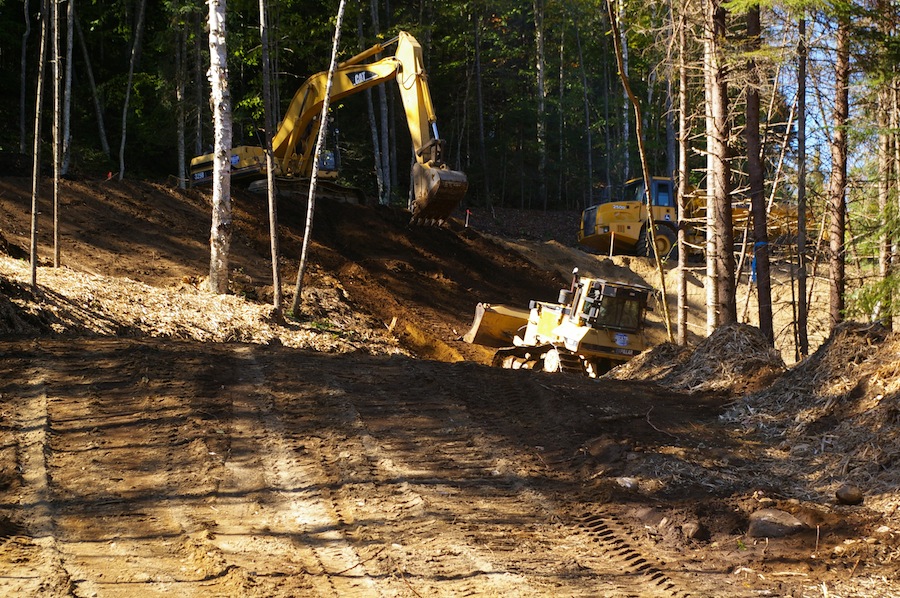
“It’s definitely been a really, really long time in the making,” Cobb said on the phone earlier this month. “I’ve got to give ORDA a lot of credit. It’s a tough time financially for all of the state organizations and ORDA definitely stepped up this year and said, ‘Yep we need to do this for the biathlon team.’ They put in a lot of staff time that isn’t reflected in the contractor costs, so I can’t say enough good about they way ORDA and the USOC came together and made this happen.”
In all, the project cost about $500,000 dollars, Cobb confirmed. The USOC came forward with the initial funds with the support of 24 Hour Fitness, and ORDA budgeted the additional amount, he explained.
Since ORDA built the range at the jumping complex in 2008, it intended to extend its paved loop from approximately 2 kilometers (which involved a hairy section through the parking lot, down into the jumping stadium and back up a massive hill to the top of the range) to something that didn’t require so many traffic logistics. As it was, a team staff member had to stand by the gate in the middle of the two-tiered downhill to make sure cars didn’t interfere with rollerskiers flying by. It was the same scenario at U.S. Ski Team camps or whenever junior programs like the New York Ski Educational Foundation (NYSEF) used the loop.
However, state budget cuts since 2008 made money for venue development hard to come by.
“New projects really weren’t possible for them last season when we had hoped to get this done,” Cobb said. “But they were able to commit some funds to it this year and the U.S. Olympic Committee really stepped up big time with the support of their sponsor … to make the loop happen.”
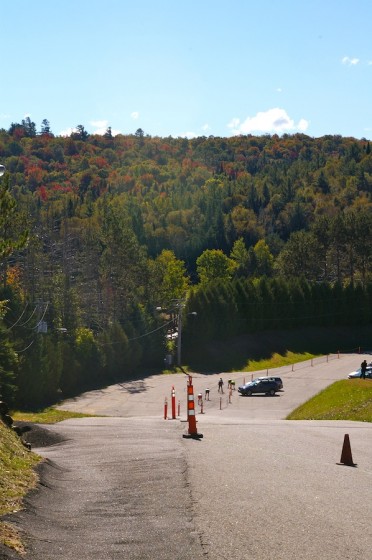
Now athletes can use the parking-lot portion if they wish for a longer loop or stick to 2 to 2 ½ kilometers of paved skiing up top.
US biathlete Leif Nordgren got out on the course for the first time in early November and tweeted a photo of it. The next day, he was excited to return for another session.
“I told the coach right as I showed up, I said, ‘Phew, it wasn’t just a dream, it’s still here,’ ” Nordgren said. “To finally have it done and completed, it’s a big relief, and it’ll be really exciting to have it all next summer to train on, too.”
The extension wasn’t very sizeable at about a kilometer and a half, but “it’s a big, huge step up from what we had before,” Nordgren said.
“The pavement is super nice, super smooth, and in general, the course is really nice, too,” he added. “It flows really good for skating and it ties into the range pretty well, and also builds on the loop that was here to begin with so everything works pretty well together now.”
Among the most important aspects of the new course are its transitions. Before, rollerskiers had to chug up a long hill out of the stadium and keep ascending into a curvy wooded section before reaching the range, previously at the height of the land. The new loop extended higher beyond that, toward the ski jump access road, which athletes could also use for longer intervals. Switchbacks on the course made the steep terrain more manageable, and essentially, more rolling.
“You’re always working; there’s a big climb out of the range, but it’s not overly hard and it’s nothing compared to what it was before,” Nordgren said. “It requires you to be a much better technical skier than the old loop did.”
In his opinion, the course flows more like a biathlon loop with a distance closer to their typical 2.5- or 3.3-kilometer race loop. Also, US biathletes, most of which train in Lake Placid at some point in the year, tended to be better hill climbers because of their training venue. The problem was, “there’s no biathlon course in the world that’s set up like that,” Nordgren said.
“Every time you come in to shoot your heart rate is through the roof and you’re completely dead,” he added. “It never really gave us a chance to work on things like transitions and technique changes and things like that. With this new loop, it’s skis so much more like the courses that we race on so hopefully it will help us better prepare for the competition season.”
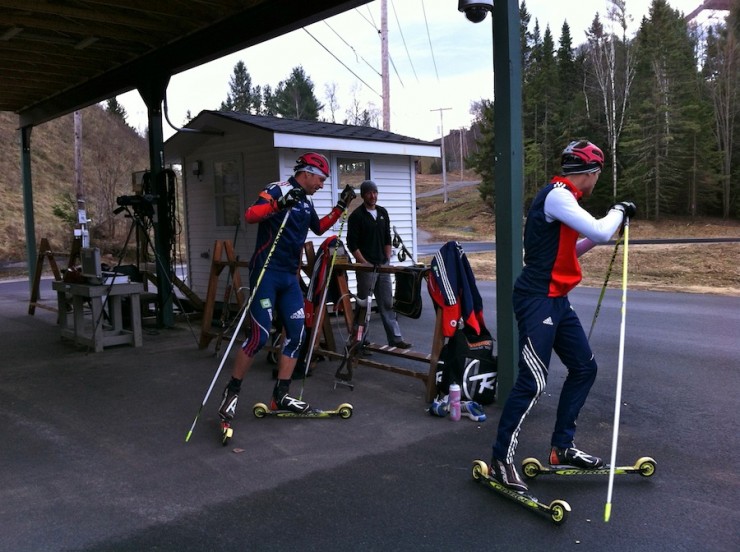
That was the idea, especially as designers sought input from Cobb, Burke and Bailey. Among the things they tweaked were corners and transitions to make it workable.
“We wanted to get in more ski-like terrain and obviously we had to use more transitions because we had to somehow get from the top point of the venue back down to the range in a safe way,” Burke said. “It’s very skiable. There’s nothing out there that’s too bad. When everyone first walks it, they say, ‘Oh, there’s a loop at the jumps there, it must be crazy and scary downhills and dangerous,’ but I did it on classic rollerskis yesterday and it’s totally fine.”
Cobb is thrilled his athletes will be able to use the new 10-foot wide course, which is wider in two-way traffic areas, next year leading up to the 2014 Sochi Olympics. Mostly, he said it’ll be best for combination training.
“It’s still a little bit short for over-distance work, but honestly we have good routes on the roads around Lake Placid for that kind of training,” Cobb said. “It really changes the nature of the opportunity for Lake Placid; it makes it a viable year-round training site for us, for the national team, where we don’t feel like we’re really missing anything there now. There are bigger rollerski loops and other things in other places, but we can do the work we need to do here, so we’re meeting that or so it seems.”
Aside from the national team, it’s a better venue for the community in terms of safety and terrain more like cross-country ski trails, he said.
“It’s definitely a big step up in terms of the youth programs that can be done there now and done really safely because it’s off the roadways,” Cobb added.
NYSEF nordic head coach Margaret Maher wrote in an email that her athletes tried the course for the first time a few weeks ago, after she deemed them ready for its downhills and corners. They will continue to have to reserve time at the venue, she explained.
For a virtual tour, check out this on-course video from USBA coach Jonne Kähkönen.
***
Alex Kochon
Alex Kochon (alexkochon@gmail.com) is a former FasterSkier editor and roving reporter who never really lost touch with the nordic scene. A freelance writer, editor, and outdoor-loving mom of two, she lives in northeastern New York and enjoys adventuring in the Adirondacks. She shares her passion for sports and recreation as the co-founder of "Ride On! Mountain Bike Trail Guide" and a sales and content contributor at Curated.com. When she's not skiing or chasing her kids around, Alex assists authors as a production and marketing coordinator for iPub Global Connection.

